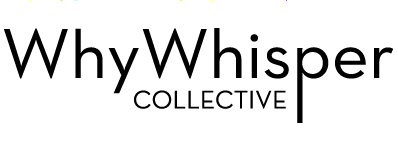One of the biggest challenges non-profit organizations face is finding funding for their operations. Often, small non-profits are forced to spend significant time and resources in search of funding, thereby taking time away from their ability to focus on the work they set out to do. For a long time, it seemed like a thick line was drawn between business and philanthropy, and it was difficult for non-profits to find alternate means of sustaining themselves.
With the rise of social enterprises, this line has been blurred. These days, companies and organizations with socially conscious missions are being built on for-profit business models, and the concept of “doing well by doing good” continues to gain momentum.
There are many types of for-profit business models that socially-focused companies and organizations use to create sustainable change – here are just a few:
Engineering for Affordability
In the developing world, there is an extreme need for basic products and appliances that have a huge impact on health, safety, and day-to-day living. Social enterprises that design and engineer these products in a simple, inexpensive, very effective manner subsequently sell them in places where they are needed at very affordable prices.
Clean Cookstoves is a social enterprise whose goal is to mitigate and prevent health issues that develop from cooking over an open fire. By designing and producing simple cookstoves that eliminate this problem, and selling them at very low cost to individuals in places that are lacking them, they are on track to foster the adoption of clean cookstoves and fuels in 100 million households by 2020.
E-Commerce Platforms
One very effective way to empower communities in need is to provide them with a platform for selling goods that they are able to make themselves. These businesses generate revenue through sales, a portion of which goes back to the makers and a portion of which funds their own operations. 31 Bits, a company that sells jewelry handmade by a team of Ugandan women, is built on this model. Their jewelry is made from 100% recycled paper sourced in Eastern Africa, so they are able to consciously expand production, according to demand.
Similarly, e-commerce company Rose & Fitzgerald sources handmade, locally-sourced products from Ugandan artisans, and re-sells them on their website. The company invests in machinery and assists with design, empowering these artisans by providing them with consistent business and opportunities for training and growth.
Buy-One Give-One Model
The one-for-one model is perhaps one of the best known in the social good for profit realm because of companies like TOMS and Warby Parker. In this model, whenever a customer purchases an item – in this case, shoes and glasses, respectively – a pair is given to a person who needs it in a developing country. This model is highly successful, because it relies on asking people to purchase items that they would likely have purchased anyway.
Another great example of this model is Kno Clothing, a clothing retailer that for every purchase made, provides an article of clothing to those in need here in the United States. Additionally, they only keep 50% of proceeds from every purchase, giving the remaining portion of the other 50% to their partners, who work to provide housing to homeless populations. All production materials are fairly traded and organic, so the whole operation is socially and environmentally conscious.
Service Providers
Social impact doesn’t always come in tangible forms; many social enterprises provide services rather than goods. These organizations and businesses provide a range of crucial services that collect revenue while making an impact on the world.
One example of such an enterprise is Bright Funds, which helps individuals decide where they should donate their money. Often times, people are interested in making donations, but they don’t know enough about relevant organizations to feel comfortable making substantial donations. Bright Funds provides analysis of organizations’ work and efficacy, thereby informing prospective donors. A portion of each of donation is then allocated toward Bright Funds’ operations.
Products for a Cause
Another social enterprise model is a combination of service provider and buy-one give-one. Companies like Janji, a clothing company that designates a portion of proceeds from specific items to mitigating a problem, fall into this category. With companies like Janji, customers can choose where their money is going by purchasing a unique piece of clothing.
Some of these companies even give individuals a chance to choose where the proceeds go. Drink Give is one such company, donating ten cents of every beverage sold to the local charity of the purchaser’s choosing. So every time you buy a Drink Give beverage, you make a difference in the community of your choice.
The social enterprise model is opening the door to a whole new way of creating social change by developing sustainable solutions to some of the world’s most pressing and difficult problems.
Know of another social enterprise model that is making a big impact? We’d love to hear about it! Comment below or reach out via Facebook and Twitter.









